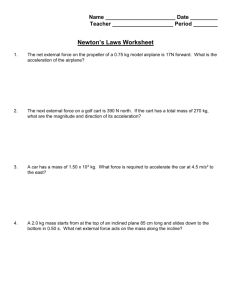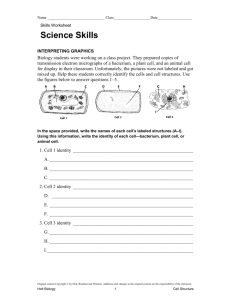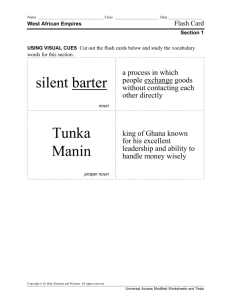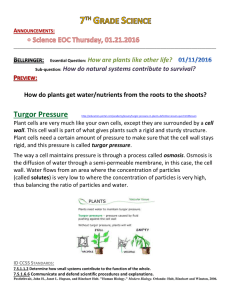How are plants like other life? 01/11/2016
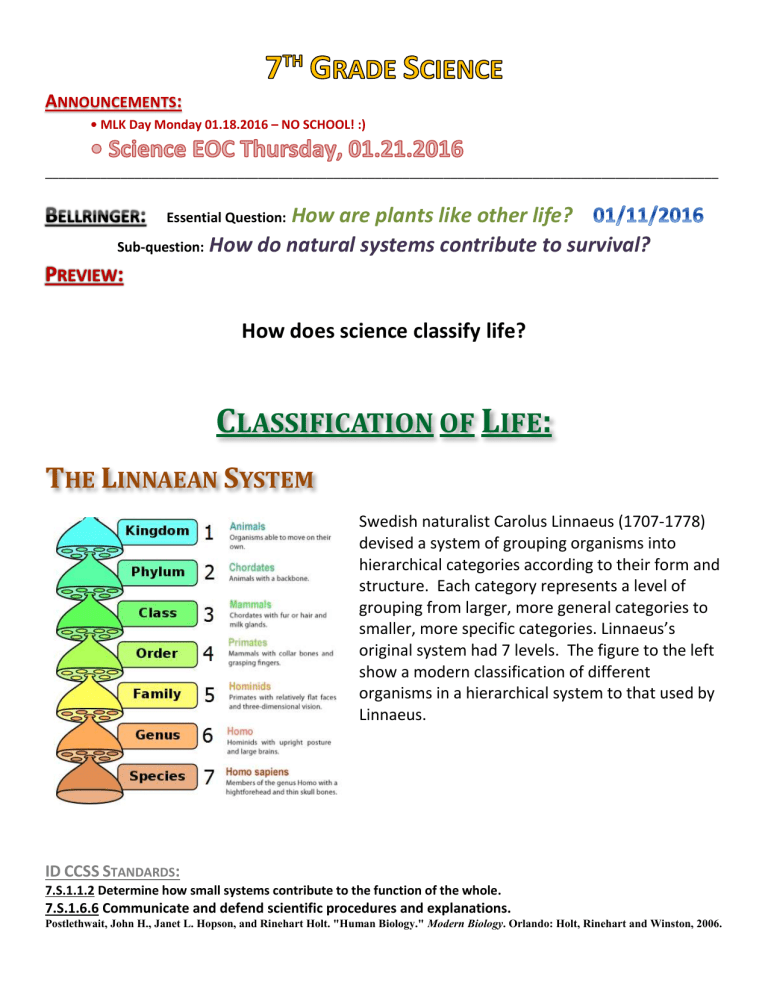
A NNOUNCEMENTS :
• MLK Day Monday 01.18.2016 – NO SCHOOL! :)
__________________________________________________________________________________________________
Essential Question:
How are plants like other life?
Sub-question:
How do natural systems contribute to survival?
P REVIEW :
How does science classify life?
C
LASSIFICATION OF
L
IFE
:
T
HE
L
INNAEAN
S
YSTEM
Swedish naturalist Carolus Linnaeus (1707-1778) devised a system of grouping organisms into hierarchical categories according to their form and structure. Each category represents a level of grouping from larger, more general categories to smaller, more specific categories. Linnaeus’s original system had 7 levels. The figure to the left show a modern classification of different organisms in a hierarchical system to that used by
Linnaeus.
ID CCSS S TANDARDS :
7.S.1.1.2 Determine how small systems contribute to the function of the whole.
7.S.1.6.6 Communicate and defend scientific procedures and explanations.
Postlethwait, John H., Janet L. Hopson, and Rinehart Holt. "Human Biology." Modern Biology. Orlando: Holt, Rinehart and Winston, 2006.
P
LANT
E
VOLUTION AND
C
LASSIFICATION
:
O
VERVIEW OF
P
LANTS
Plants dominate the land and many bodies of water. Plants exhibit tremendous diversity. Some plants are less than 1 mm (0.04 in.) in width, and some plants grow more than 100 m (328 ft) in height. The
12 phyla, or divisions, of kingdom Plantae include more than 270,000 species. Some plants complete their life cycle in a few weeks, but other may live nearly 5,000 years.
Adapting to Land
Although life had flourished in the oceans for more than 3 billion years, no organisms lived on land until about 475 million years ago, when a layer of ozone formed. The ozone protected organisms from the sun’s ultraviolet radiation. Eventually, small club-shaped plants began to grow in mud at the water’s edge. Three adaptations allowed plants to thrive on land:
• the ability to prevent water loss
• the ability to reproduce in the absence of water
• and the ability to absorb and transport nutrients
P
REVENTING
W
ATER
L
OSS
The move to land offered plants distinct advantages, including more exposure to sunlight for photosynthesis, increase carbon dioxide levels, and a greater supply of inorganic nutrients.
However, the land environment also presented challenges. Plantson land are susceptible to drying out through evaporation.
The cuticle (KYOOT-i-kuhl), a waxy protective covering on plant surfaces that prevents water loss, was one early adaptation to life on land. Although it protects a plant by keeping water in the plant, the cuticle also keeps out carbon dioxide. Plants that had small openings in their surfaces, called stomata, were able to survive. Stomata allow the exchange of carbon dioxide and oxygen.
ID CCSS S TANDARDS :
7.S.1.1.2 Determine how small systems contribute to the function of the whole.
7.S.1.6.6 Communicate and defend scientific procedures and explanations.
Postlethwait, John H., Janet L. Hopson, and Rinehart Holt. "Human Biology." Modern Biology. Orlando: Holt, Rinehart and Winston, 2006.
R
EPRODUCING BY
S
PORES AND
S
EEDS
Successful land plants also developed structures that helped protect reproductive cells from drying out. A spore is a haploid (1/2 the chromosomes) reproductive cell surrounded by a hard outer wall.
Spores allowed the wide spread dispersal of plant species. Eventually, most plants developed seeds.
A seed is an embryo surrounded by a protective coat. Some seeds also contain endosperm, a tissue that provided nourishment for the developing plant. The figure to the left shows the unusual adaptation of the sugar maple tree for seed dispersal. Seeds are more effective at dispersal than spores are.
A
BSORBING AND
T
RANSPORTING
M
ATERIALS
Aquatic plants take nutrients from the water around them. On land, most plants absorb nutrients from the soil with their roots. Although the first plants had no roots, fossils show that fungi lived on or within the underground parts of early plants.
Certain species of plants evolved a type of tissue known as vascular (VASkyuh-luhr) tissue, which transports water and dissolved substances from one part of the plant to another. Two types of specialized tissue make up vascular tissue. Xylem (ZIE-luhm) carries absorbed water and inorganic nutrients in one direction, from the roots to the stems and leaves. Phloem
(FLOH-em) carries organic compounds, such as carbohydrates, and some inorganic nutrients in any direction, depending on the plant ’ s needs. In addition to transporting absorbed materials, vascular tissue also helps support the plant, which is an important function for land plants.
ID CCSS S TANDARDS :
7.S.1.1.2 Determine how small systems contribute to the function of the whole.
7.S.1.6.6 Communicate and defend scientific procedures and explanations.
Postlethwait, John H., Janet L. Hopson, and Rinehart Holt. "Human Biology." Modern Biology. Orlando: Holt, Rinehart and Winston, 2006.
Classifying Plants
Study the classification of plants in the table below. The 9 phyla of vascular plants, formally referred to as divisions, can be divided into two groups based on the presence of vascular tissue. The three phyla of nonvascular plants have neither true vascular tissue nor true roots, stems, or leaves. The nine phyla of vascular plants have vascular tissue and true roots, stems, and leaves.
Notice in the table that vascular plants can be further divided into two groups, seedless plants and seed plants. Seedless plants include the phylum of ferns and three phyla made up of plants closely associated with ferns. Seed plants – plants that produce seeds for reproduction
– include four phyla of gymnosperms (JIM-noh-SPUHRMZ) and one phylum of angiosperms
(AN-jee-oh-SPUHRMZ). Gymnosperms, which include pine trees, are seed plants that produce seeds that are not enclosed in fruits. Angiosperms, also known as flowering plants, are seed plants that produce seeds within a protective fruit. Examples are apple and orange trees.
ID CCSS S TANDARDS :
7.S.1.1.2 Determine how small systems contribute to the function of the whole.
7.S.1.6.6 Communicate and defend scientific procedures and explanations.
Postlethwait, John H., Janet L. Hopson, and Rinehart Holt. "Human Biology." Modern Biology. Orlando: Holt, Rinehart and Winston, 2006.
Evolution of Plants: https://www.youtube.com/watch?v=4l4LKCq2eJs
ID CCSS S TANDARDS :
7.S.1.1.2 Determine how small systems contribute to the function of the whole.
7.S.1.6.6 Communicate and defend scientific procedures and explanations.
Postlethwait, John H., Janet L. Hopson, and Rinehart Holt. "Human Biology." Modern Biology. Orlando: Holt, Rinehart and Winston, 2006.
P
LANT
S
TRUCTURE AND
F
UNCTION
:
P
LANT
C
ELLS AND
T
ISSUES
Plants have adapted to a range of environment over the course of their evolution. As plants grow, their cells become specialized for particular functions. The tissue patterns vary in each plant ’ s roots, stems, and leaves. They also vary depending on the plant ’ s stage of growth and taxonomic group. This section examines the structure and function of roots, stems, and leaves.
Plant Tissue Systems
Cells that work together to perform a specific function form a tissue. Tissues are arranged into systems in plants, including the dermal system, ground system, and vascular system. These systems are further organized into three major plant organs – the roots, stems, and leaves.
The organization of each organ reflects adaptations to the environment.
ID CCSS S TANDARDS :
7.S.1.1.2 Determine how small systems contribute to the function of the whole.
7.S.1.6.6 Communicate and defend scientific procedures and explanations.
Postlethwait, John H., Janet L. Hopson, and Rinehart Holt. "Human Biology." Modern Biology. Orlando: Holt, Rinehart and Winston, 2006.


